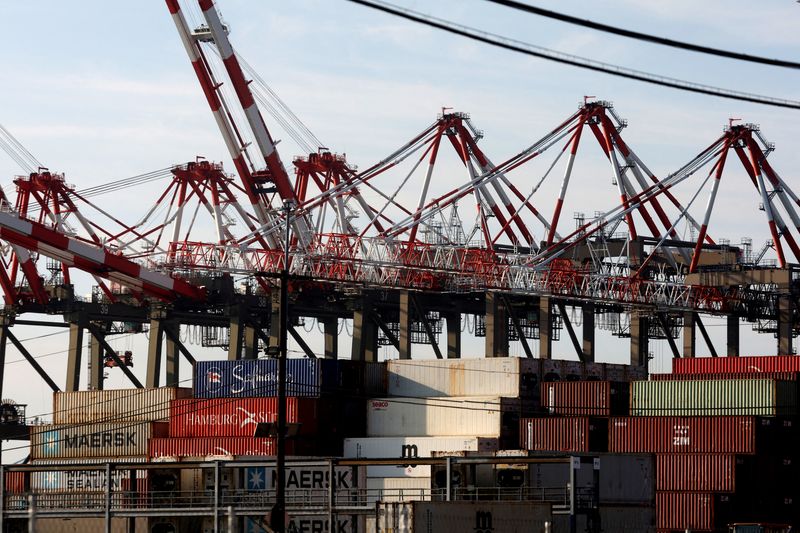By David Shepardson and Lisa Baertlein
WASHINGTON (Reuters) -The union representing 45,000 East Coast and Gulf Coast dockworkers and a group representing employers held a new round of contract talks this week but failed to make significant progress on the critical issue of automation, the two sides said on Wednesday.
That divide must be bridged before Jan. 15 to avoid a second port strike that would disrupt the nation's flow of goods as importers and exporters prepare for potential upheaval from President-elect Donald Trump's threatened tariffs on a broad swath of goods from China, Mexico and other countries.
Leaders of the International Longshoremen's Association union are dogged foes of automation, saying it will kill jobs.
Employers back automation and semi-automation, saying it is crucial to U.S. port competitiveness and can increase cargo volumes that underpin jobs. Meanwhile, President Joe Biden's administration is concerned about the prospect of a new work stoppage next year, a senior official said.
The union declined a request for comment but addressed the situation in a Facebook (NASDAQ:META) post that was later removed, although not before it was shared within the shipping industry.
"The ILA's resolve remains strong not to surrender any ILA jobs," the union said in the posting, adding that it cut off talks after the employer group continued pushing automation and semi-automation language in its Master Contract proposals.
The ILA agreed to end a three-day strike on Oct. 3 after it won a 62% wage hike over six years with the United States Maritime Alliance (USMX) employer group following significant involvement by the White House and other Biden administration officials.
The work stoppage was the first large-scale strike at East and Gulf Coast ports in nearly 50 years, briefly halting the flow of about half the country's ocean shipping.
USMX and the union met for two days this week in an effort to reach a new six-year contract ahead of their extended Jan. 15 deadline.
"While we had positive progress on a number of issues, we were unable to make significant progress on our discussions that focused on a range of technology issues," USMX said in a statement.
The employer group said it is "not seeking technology that would eliminate jobs."
It said the union is "insisting on an agreement that would move our industry backward by restricting future use of technology that has existed in some of our ports for nearly two decades, making it impossible to evolve to meet the nation's future supply chain demands."
One scenario at issue is the use of driverless cranes that pick up containers from stacks on docks and move them to waiting trucks. Union workers in remote locations lower the containers onto the chassis to ensure that they are securely placed, a source familiar with the talks told Reuters.

That type of semi-automation has helped terminals increase the number of containers they can handle, which supports jobs, that source said.
The tentative deal announced last month would raise average union wages to about $63 an hour from $39 an hour over the life of the contract. That is contingent on the rest of the issues being resolved.